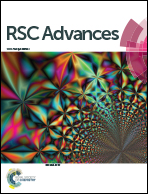Exploring the interaction between Salvia miltiorrhiza and xanthine oxidase: insights from computational analysis and experimental studies combined with enzyme channel blocking†
Abstract
Xanthine oxidase (XO) has emerged as an important target not only for gout but also for cardiovascular diseases and metabolic disorders involving hyperuricemia. Salvia miltiorrhiza, a traditional Chinese medicine, is widely used for the clinical treatment of cardiovascular diseases. Herein, an integrated approach consisting of computational analysis and experimental studies was employed to analyze the interaction between S. miltiorrhiza and XO. Molecular docking simulations were performed to reveal the binding characteristics of the chemicals identified in S. miltiorrhiza on the basis of the total docking score and key molecular determinants for binding. The affinities of 10 representative compounds from the herb to XO were predicted and then confirmed by enzyme inhibitory assay in vitro. The binding specificity of these compounds was further validated by enzyme channel blocking, which contributed to elucidating the interaction mechanisms between the herb and XO. Results suggested that several compounds in S. miltiorrhiza exhibited a potential XO inhibitory activity with the molybdenum-pterin center domain as the active binding site. Salvianolic acid C, the active XO inhibitor, also exerted a potent hypouricemic effect on the mouse model induced by potassium oxonate. Such findings may be used to indicate the usefulness of the integrated approach for this scenario.


 Please wait while we load your content...
Please wait while we load your content...